Day 3 of a three day tour combining the best of winter birding with some owls. Today the cloud did descend and it was a rather grey day, but it was dry and with light winds it felt mild for the time of year. We spent the day exploring the North Norfolk coast.
Our destination for the morning was Holkham. We parked on Lady Anne’s Drive and got out to scan the grazing marshes. There were lots of Wigeon feeding on the grass close to the fence, and more ducks further back around the pools. We could hear Pink-footed Geese calling further out to the west, and then a huge flock came up from Wells, calling. Fabulous – the sound of winter here.
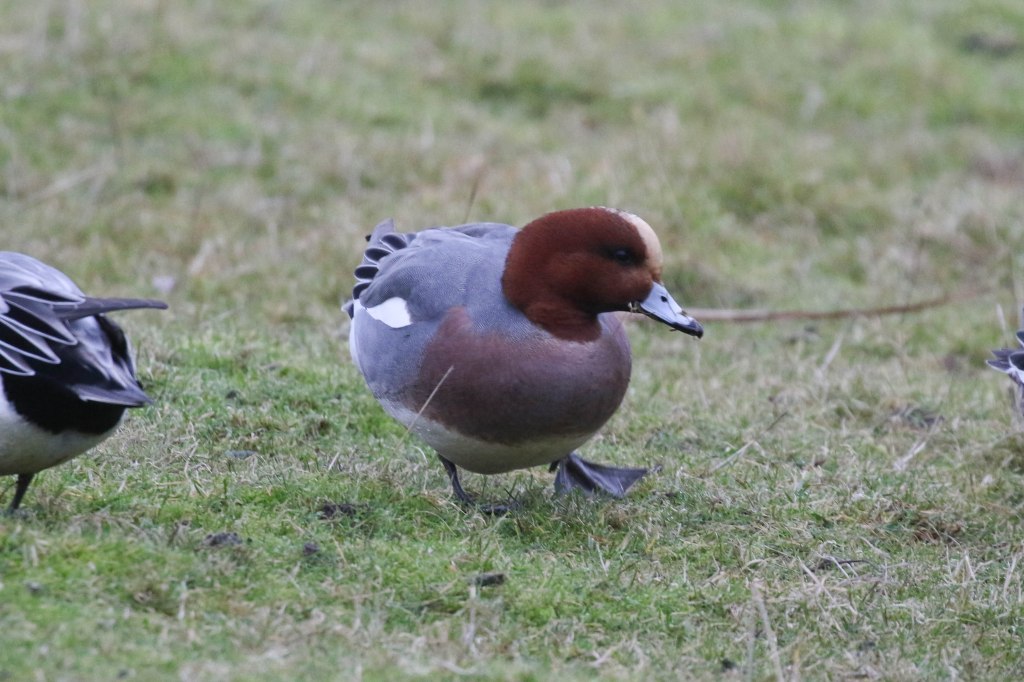
There were waders too – Oystercatcher, Curlew, Black-tailed Godwit and several Redshank one side; more Redshank and Black-tailed Godwit, several Common Snipe and two Ruff the other. One of the Ruff had a much whiter head that the other, possibly a ‘satellite male’ come the lekking season.
There were a couple of Fieldfares out on the grass too, which we got in the scope for a closer look. We could see the grey rump on one as it turned back on to us.
We got a message to say that a White-tailed Eagle was perched in one of the trees to the west, and looking across we could see a very big bird distantly perched in a dead tree in Decoy Wood. Through the scopes, we could see that it was indeed a White-tailed Eagle – a very impressive-looking beast, even at that range!
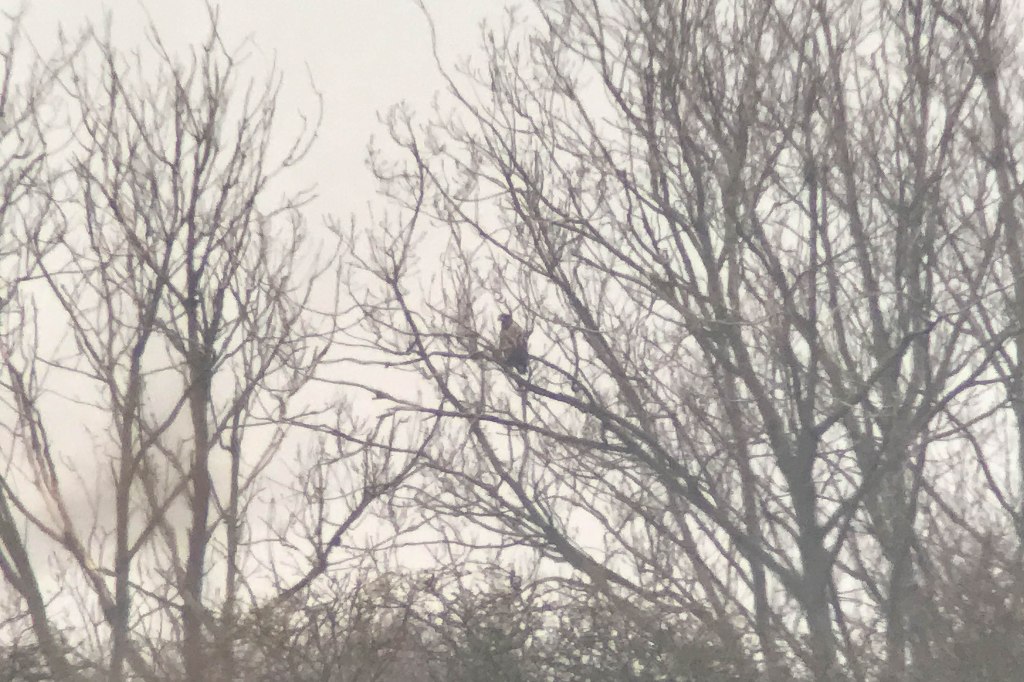
One of the birds from the Isle of Wight White-tailed Eagle reintroduction scheme, this bird is a male released there in 2020 known as G471, and it is fitted with a satellite transmitter. It has been to Holkham before, about 9 months ago, and spent most of the intervening period wandering Scotland and the north-east of England. It flew a short distance to another tree and this time we had a Red Kite in the same view, which looked tiny by comparison.
While we were watching the White-tailed Eagle, some Pink-footed Geese landed on the grazing marsh in the same view, but much closer to us. So we turned the scopes on them next – a nice closer-up view, we could see their dark heads and delicate pink-banded bills.
Scanning the grass the other side, we eventually found some Grey Partridges. They were a bit further back today and well camouflaged in amongst some dead thistles at first, but we had a good look at them through the scopes. A Mistle Thrush was feeding on the short grass nearby. When we looked back, the White-tailed Eagle had gone, flown across into Holkham Park apparently.
We walked west on the inland side of pines. The trees were rather quiet, just a few Coal Tits and Jays calling. Salts Hole held a few Little Grebes and a small number of Gadwall asleep in the reeds. As we walked on, a Grey Wagtail flew off ahead of us calling.
Up onto the boardwalk at Washington Hide, we looked out over the grazing marshes again. A Great White Egret was feeding on the small pools out in the middle, we could see its long, dagger-like yellow bill through the scopes.
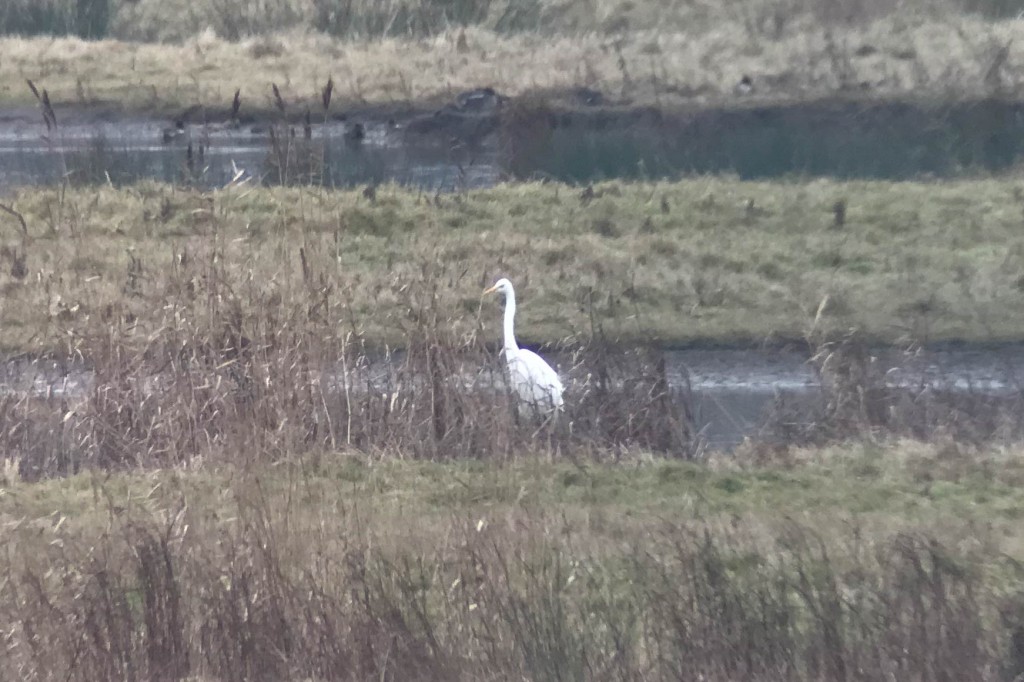
We cut through the pines on the boardwalk now, out towards the beach, and stopped to scan the sea from the platform at the far end. There were a few groups of Sanderling out on the shore.
A large raft of ducks offshore turned out to be Wigeon, presumably flushed from the grazing marshes and seeking safety out here. Scanning across, we found several Great Crested Grebes and a single Red-throated Diver too. Further over to the west, we found some more ducks on the water, this time a distant flock of scoter. They were a long way off, but in among the mostly Common Scoter, we could see at least one Velvet Scoter with them. We would need to walk up closer for everyone to be able to see them though.
The Shorelarks have been out on the beach to the west for the last couple of weeks, so we walked on that way to look for them. However, once we got beyond the dunes where the Little Terns breed, we couldn’t see them today, despite scanning the beach and the tideline.
We did have a better view of the Velvet Scoters now, at least three of them, although all the ducks were diving continually. Occasionally we could see white in the wing as a stripe on the flank or a better view as one flapped its wings. Thankfully, the Velvet Scoters were tending to keep to the leading edge of the flock, so it made it a bit easier to pick them out from the more abundant Common Scoters.
A little further up, we found another group looking for the Shorelarks too. They hadn’t found them, but had spotted two Snow Buntings, albeit very distant, feeding on the shells below the high tideline. Then a message came out to say the Shorelarks had just been seen back in the cordon, all the way across on the other side of the Gap. Very annoying – the first time they had been out there in weeks! We walked over there along the beach – thankfully, it was a lovely day for a long stroll across the sands.
When we arrived at the cordon, we could see the large flock of at least 70 Snow Buntings feeding on the saltmarsh beyond the rope, and lots of silvery grey Sanderling too, but no sign of the Shorelarks at first. We were just starting to get worried, but never giving up we continued to scan and then found them in the thicker vegetation. We counted at least four Shorelarks and had some nice views through the scopes, before they disappeared back in.
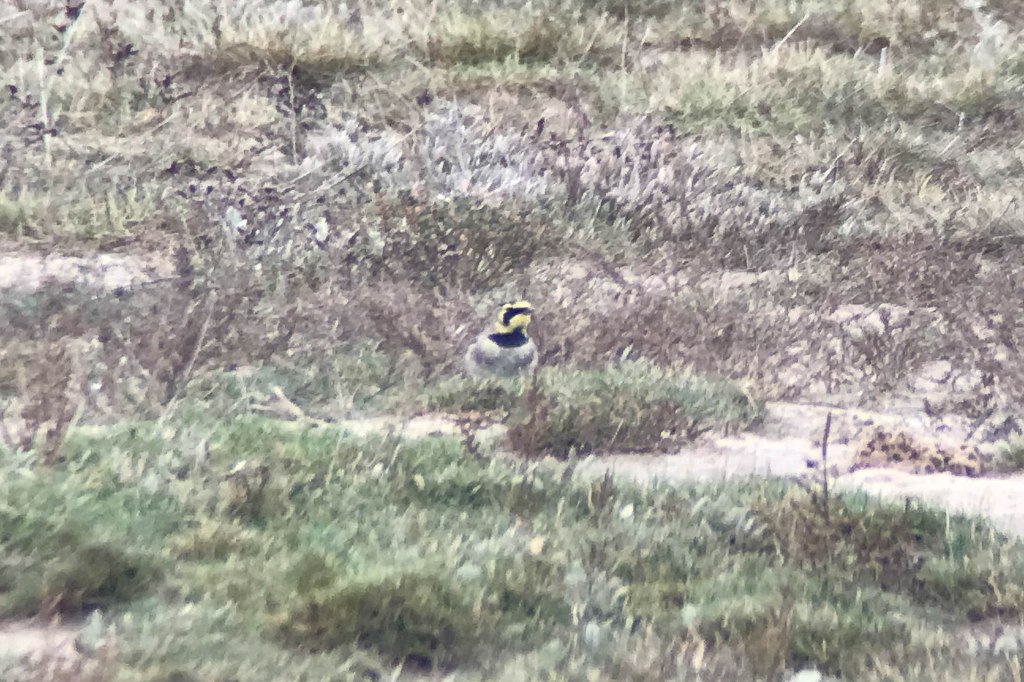
Relief! Having enjoyed a good look at the Shorelarks as they scuttled in and out of the saltmarsh vegetation, we turned our attention to the sea. Scanning from the dunes, we found a couple of Eider, several Red-breasted Mergansers, and more Red-throated Divers this end of the Bay. What might appear to be a long oil slick in the distance is actually an enormous raft of Common Scoters, so we turned the scopes on that now too.
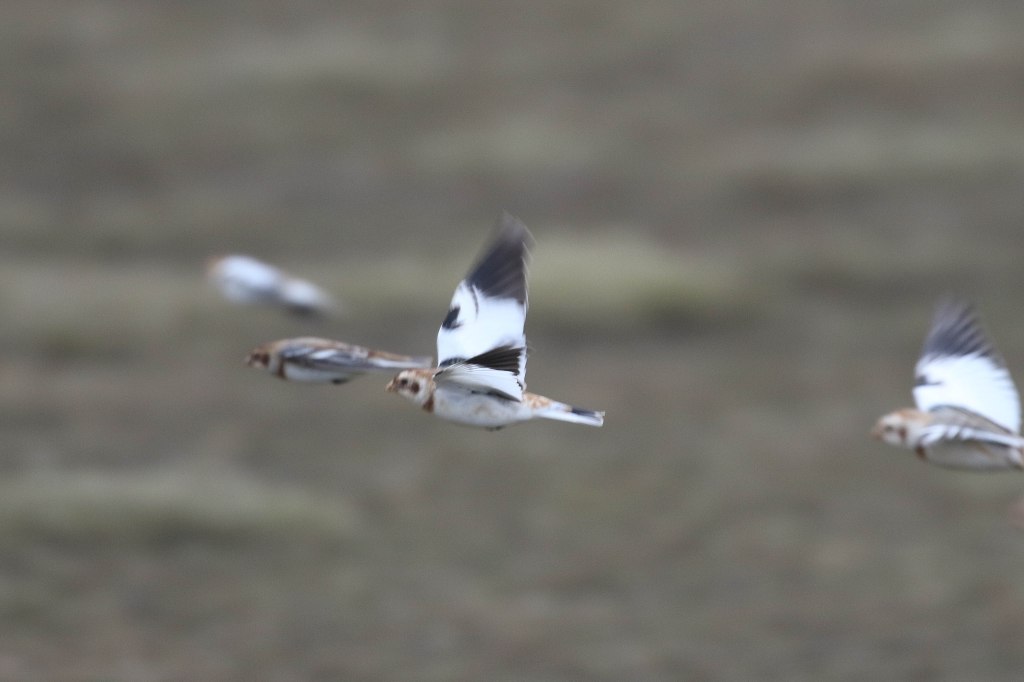
As we started to walk back, something spooked the Snow Buntings down at the far end of the cordon and we heard them flying towards us. They landed right beside us but unfortunately only very briefly, before they were off again. They flew on past us and disappeared off towards the Gap. They have often dropped down to feed on the path recently, but there were probably too many people and dogs out today and we didn’t find them again on our way back.
A little group of Sanderlings had also flown out of the cordon and they were now feeding on the saltmarsh close to the path, very tame. More usually seen out on the beach, they look slightly out of place scuttling around on the short vegetation.
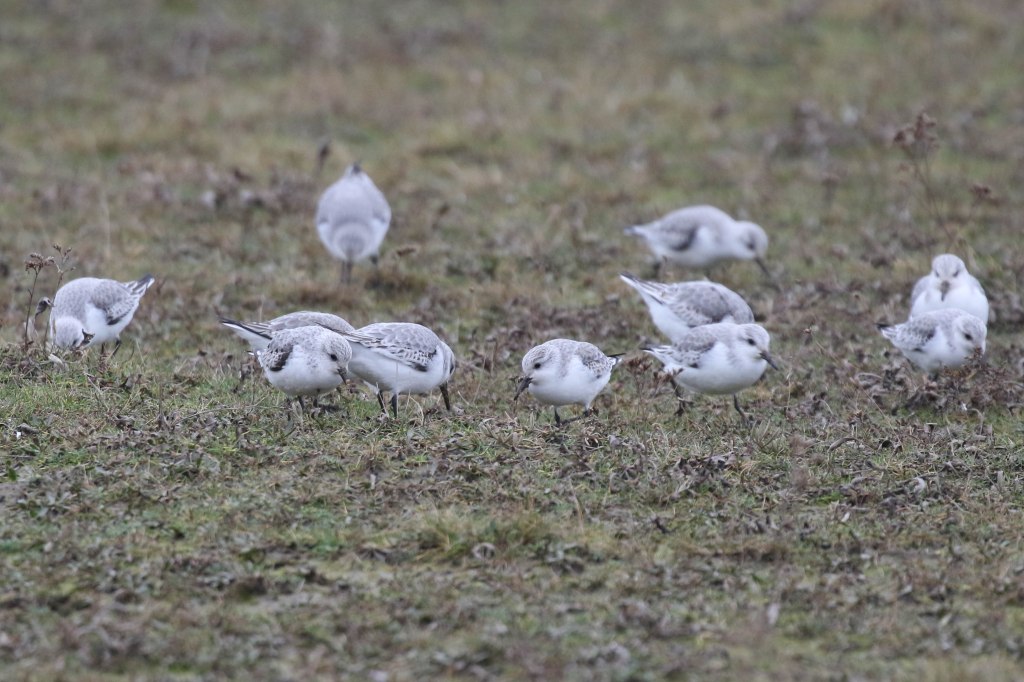
A little further on, we turned as a couple of Rock Pipits flew over calling and dropped down onto the saltmarsh. We got the scopes on them for a closer look, rather swarthy with heavy blotches below. When they eventually took off again, they brought up some Meadow Pipits from further back.
Back to Lady Anne’s Drive, we stopped for lunch at The Lookout. As it was so mild and still, we ate outside on the picnic tables – not always possible in mid January! A Pied Wagtail was hanging around looking for crumbs.
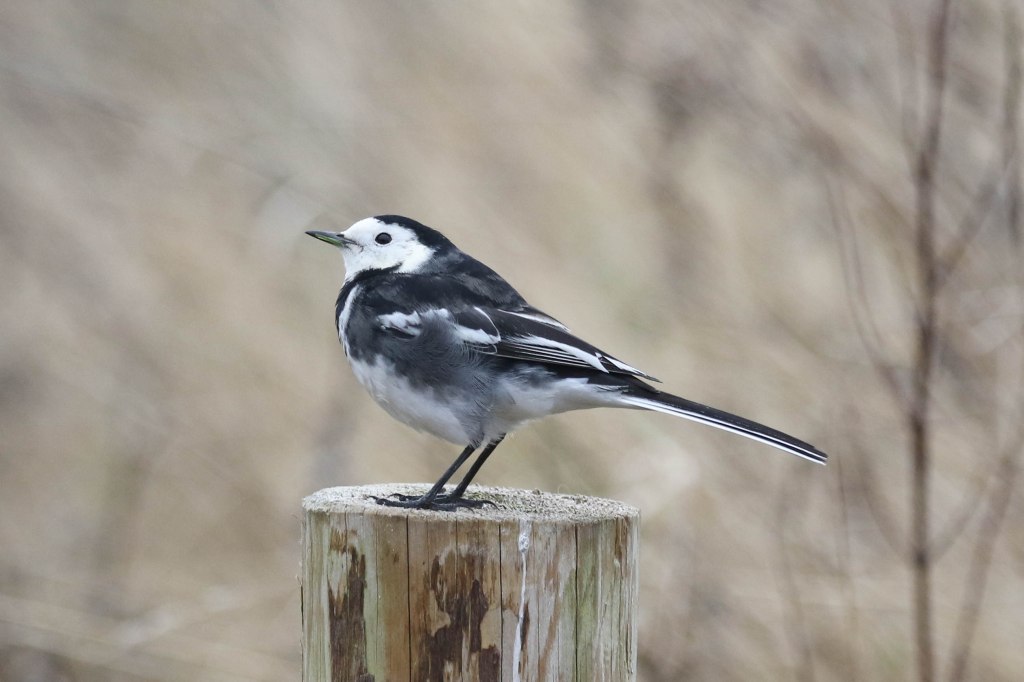
Titchwell was our destination for the afternoon, but we had a very quick stop on the way. We quickly picked up some White-fronted Geese out on the grazing marsh, 25-30 distantly. Two more Great White Egrets were feeding around the pools nearby and a very pale Common Buzzard was perched in the top of a hawthorn further back.
The car park at Titchwell was not too busy today, perhaps not a surprise given the grey weather. As we made our way in, the feeders behind the Visitor Centre produced a few Greenfinch for the trip list, as well as more finches in the alders above.
Out on the main path beyond, a Water Rail was feeding in the ditch just below. We had a great view of it creeping around in the bottom, out in full view. Fantastic to watch these often very secretive birds in the open. Then we spotted a second Water Rail just a few metres further up the same ditch. Two for the price of one!
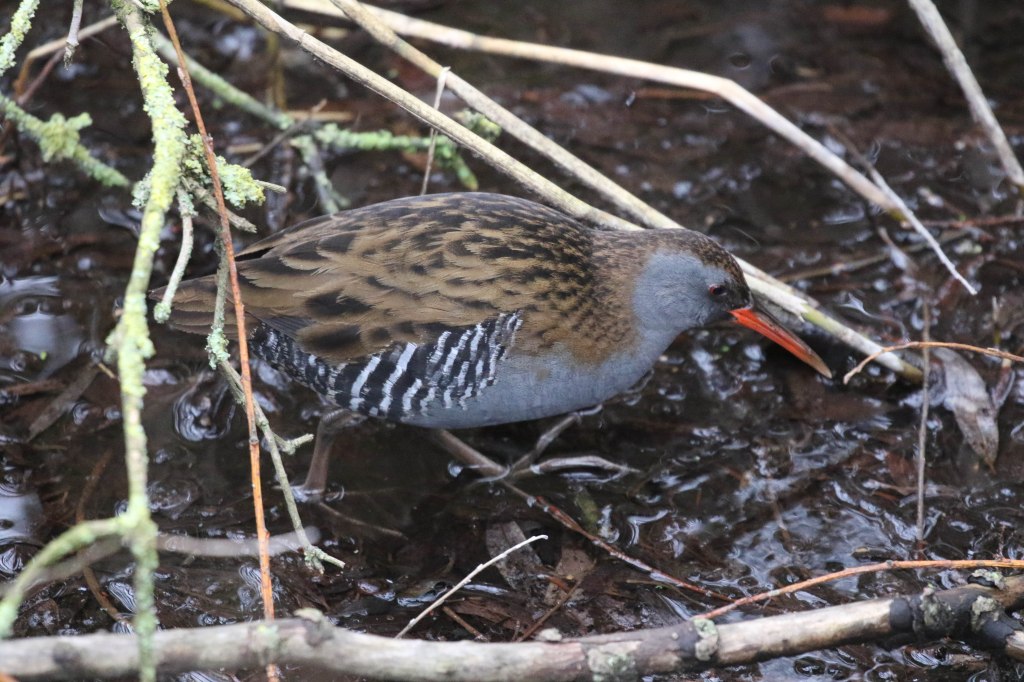
It was very still this afternoon, little or no wind as we walked past the reedbed, but perhaps it was just a bit dull for Bearded Tits and predictably all was quiet. There were a few Tufted Ducks and Greylags on reedbed pool.
The Freshmarsh is looking really good this winter, as the works carried out last autumn to divide it into compartments have created more variety in the islands and edges. There were hundreds of Golden Plover roosting on the new bund, chattering quietly. They are surprisingly well camouflaged against the mud, but beautifully golden close up through the scopes, even in the dull light today.
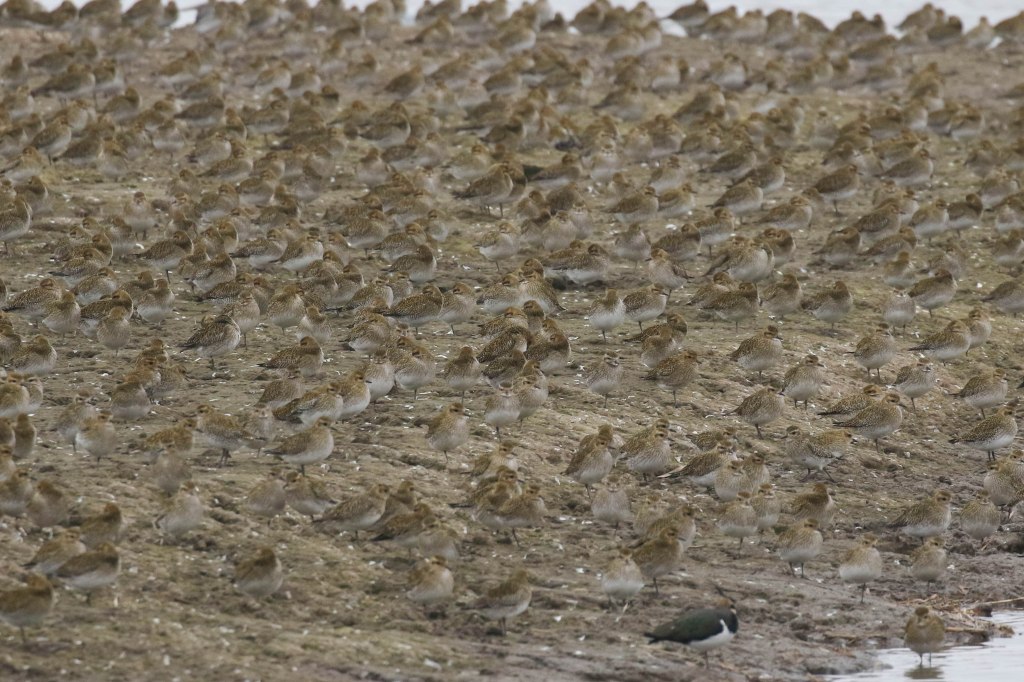
There are still several Avocets here, enjoying the new freshmarsh, in the further pool. Several Common Snipe were lurking on the muddy edge by the reeds and a little group of Dunlin was scuttling around on the island in front of Parrinder Hide.
We scanned the islands and edges but there was no sign of any Water Pipit this afternoon. They have been rather elusive this winter, probably given lots of places to feed in the reedbed after all the works last autumn. We did find several Pied Wagtails, a flock of Linnets, and one or two Skylarks.
The usual selection of ducks were here too, including a couple of smart drake Pintail. The Teal are looking stunning now and we watched a drake just below the path bobbing its head to an accompanying female. A large flock of Brent Geese flew in from Brancaster chattering, and dropped down on the water in the middle.
Moving on, we stopped to scan the channel at the far end of Volunteer Marsh, where we found several Grey Plover on the muddy edges, along with a scattering of Curlew and Redshank.
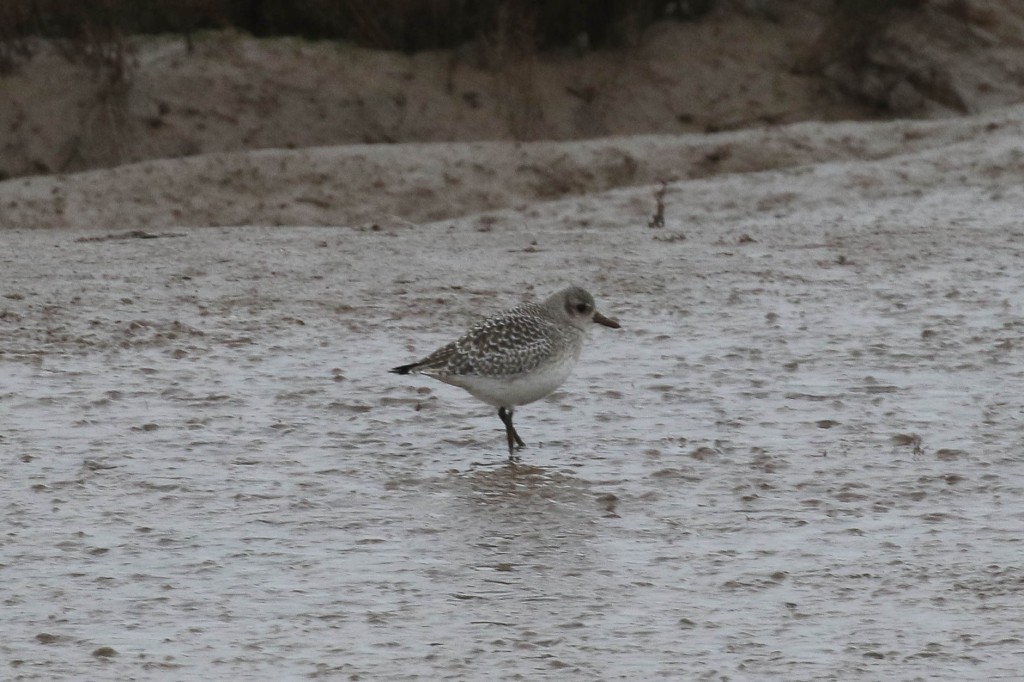
With the tide out, there weren’t many waders on the Tidal Pools – they were all still feeding out on the beach. There were a few ducks, including several more Pintail asleep at the back. A Little Grebe was luring along the edge.
Scanning the beach from the edge of the dunes, we could see lots of waders down on the shore. We got the scopes on one of the Bar-tailed Godwits feeding on the sand, and then some Knot and Turnstone on the mussel beds. All additions to the trip list. There were several Goldeneye and a few Red-breasted Merganser on the sea, but we couldn’t pick out anything else this afternoon.
As we walked back. we could see a redhead Red-breasted Merganser now on Tidal Pool, diving continually. A few Marsh Harriers were starting to gather over the reedbed and out over Thornham saltmarsh. A Cetti’s Warbler shouted from the reedbed as we passed.
There was one last thing we wanted to do, so we drove back east and inland. We walked down a footpath and stopped overlooking a wood. A Little Owl called somewhere off in the distance. We trained the scopes on a hole in one of the trees opposite and we didn’t have to wait too long before a figure appeared in the entrance to the hole – a Tawny Owl.
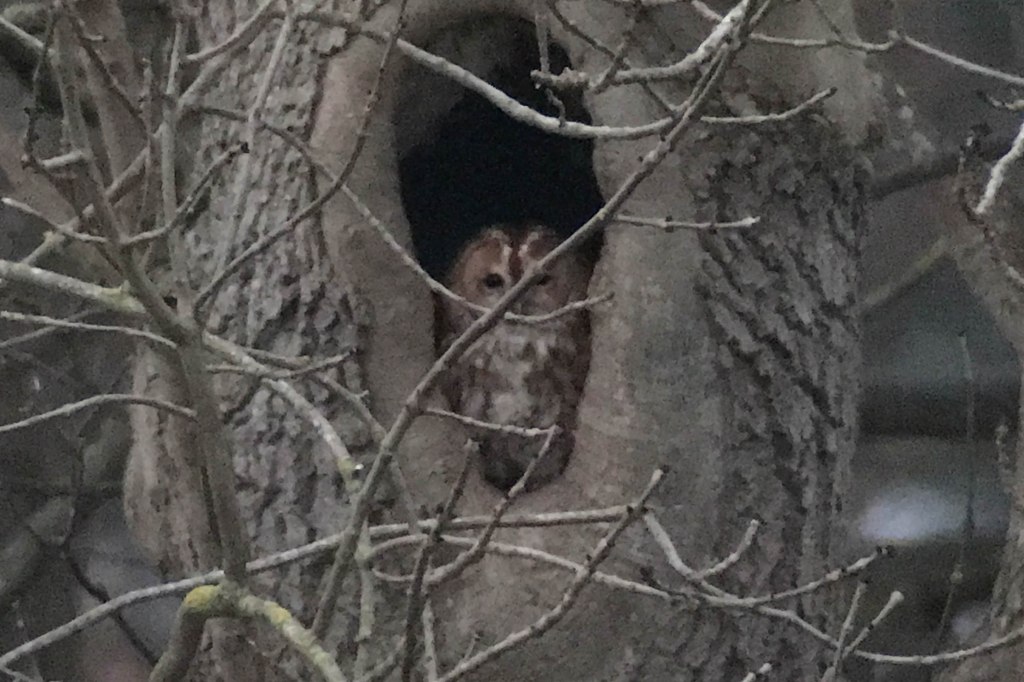
We had a lovely view of the Tawny Owl through the scopes, as it perched there looking round. It didn’t stay too long, perhaps aware of our presence despite being some distance away, it dropped back in. We left it in peace – a great way to end the tour.
















